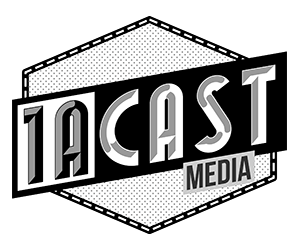 Oregon Governor John Kitzhaber, friend of unions–particularly this one, is asking AFSCME (and SEIU) workers to take a 3% raise. He’s giving them a raise so, as a Salem reporter puts it, “the union could use that increase to “buy back” some of the concessions that the state is asking for in its opening round. Here”
Oregon Governor John Kitzhaber, friend of unions–particularly this one, is asking AFSCME (and SEIU) workers to take a 3% raise. He’s giving them a raise so, as a Salem reporter puts it, “the union could use that increase to “buy back” some of the concessions that the state is asking for in its opening round. Here” Isn’t that amazing? The Governor spots the union a 3% increase (you’re getting 6% over the next two years, right?) so they can use this imaginary increase to negotiate for concessions from the governor. That’s like playing Monopoly with your opponent spotting you Boardwalk, Park Place and Baltic and Mediterranean Avenues.
Isn’t that amazing? The Governor spots the union a 3% increase (you’re getting 6% over the next two years, right?) so they can use this imaginary increase to negotiate for concessions from the governor. That’s like playing Monopoly with your opponent spotting you Boardwalk, Park Place and Baltic and Mediterranean Avenues. Here’s the breakdown of what the Governor is suggesting:
- -Seven unpaid furlough days each year, equivalent to a 3 percent cut in salary.
- -Seven unpaid furlough days each year, equivalent to a 3 percent cut in salary.
- -No [automatic] step pay increases.
- -A cap on health insurance contributions, with employees expected to pay the cost of future increases in premiums.
- -An end to the 6 percent pickup, a longstanding practice under which state agencies cover employees’ legally mandated contributions to the Oregon Public Employees Retirement System.
The union chief, Ken Allen says he’s stunned by the offer,
“It’s the most draconian proposal we’ve seen in 20 years,” Allen told the state team, later adding, “We’re going to have a lot of ground to plow to get to an agreement from where you’ve started.
Considering that the state rolls over every time these people come to the, ahem, “bargaining” table, I can see why he characterizes the governor’s offer as “draconian.”
Here’s what he wants for his 6,000 workers according to Oregon Transformation:
- -Cost of living plus 2%
- -Continuation of taxpayers paying the 6% PERS contribution for each employee.
- -Fully paid health premiums [Oregon is the only state to pay 100% for insurance]
- -Step increases [longevity raises]
- -More vacation days
- -Increased bereavement leave
- -Another paid holiday (day after Thanksgiving)
All tolled that’s an 18% increase they’re asking for. In a recession. When the number of state employees has gone up while private sector jobs have gone down (+4300:-150,000).
How do we stack up to Wisconsin? Unfortunately we’re looking at the same kind of problems. State Representative Dennis Richardson lays out these comparisons:
Consider the following facts:–Wisconsin has a population of 5.7 million.–Oregon has a population of 3.8 million.–Wisconsin has a budget shortfall of at least $3.6 billion over the next two years.–Oregon has a budget shortfall of at least $3.5 billion over the next two years.–Wisconsin State workers currently pay 6% of their health benefit costs and are being asked to increase the employee’s portion and pay 12% of their health care premiums. (Kaiser Family Foundation states the national average contribution toward healthcare policies among government and private workers is nearly 30%.)–Oregon State workers currently pay nothing (0%) toward their health benefits. (Oregon is the only state in the USA that pays 100% of its employee health benefit and PERS costs.)–Wisconsin State workers currently pay 1% of their retirement plan costs and they are being asked to increase employee contributions to 5.8%. (The national average for government worker contributions toward retirement plans is 6.3%.)–Oregon State workers currently pay nothing (0%) toward their retirement plan (PERS) costs. (Click here.)–Wisconsin’s proposal includes prohibiting most government workers from (1.) collectively bargaining for anything other than their salaries, and (2.) demanding pay increases above the Consumer Price Index measure of inflation. To bypass the salary cap would require voter approval. Additionally, Wisconsin’s proposal would stop unions from requiring public employees to pay union dues.
–Oregon has no limitations on public employee unions or their ability to collectively bargain, and Oregon collects union dues from state employee paychecks. (Oregon’s public employee unions are free to continue negotiating for the State to pay 100% of both health and PERS retirement benefits for all State workers. [Wisconsin information source—Click here.]
How bad are Oregon’s budget problems? State Rep Bill Richardson lays it out for you here:
Tell ’em where you saw it. Http://www.victoriataft.com



